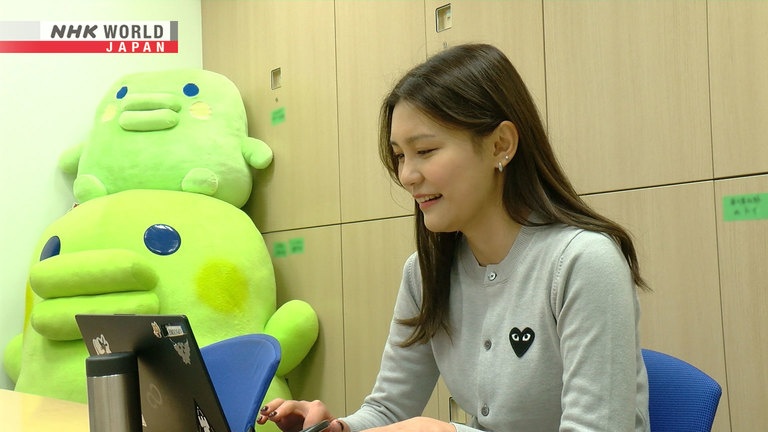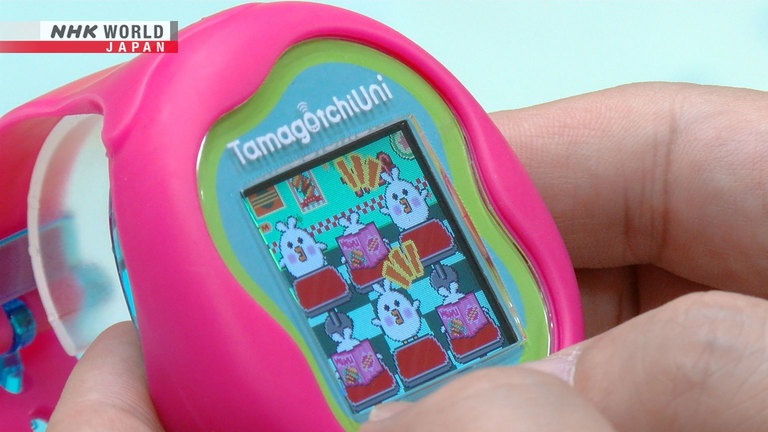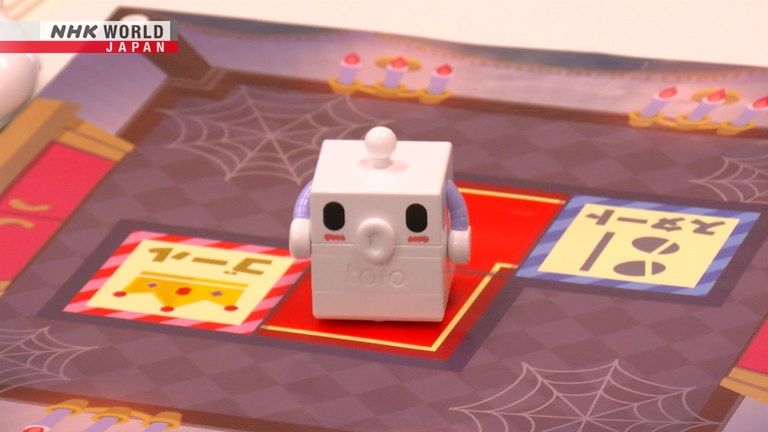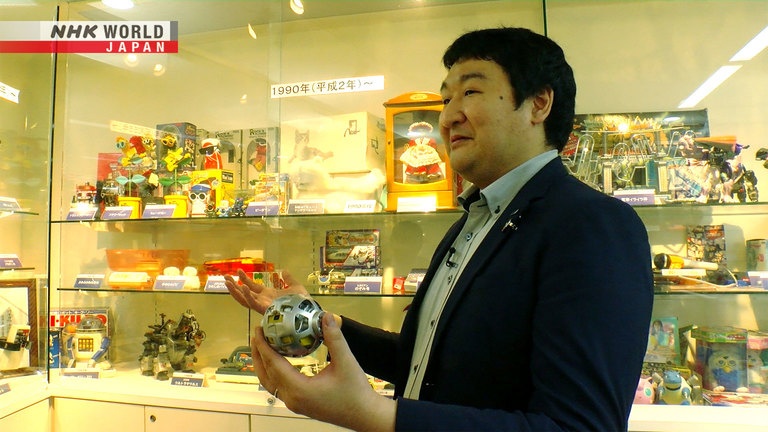Japanese High-Tech Toys Go Global!
Japanese high-tech toys, fusing advanced technology and "kawaii" culture, are booming, even in education and space exploration. Through a Chinese woman at a toy maker, we look at their global advance.




Transcript
'High-tech toys' equipped with electronic devices are popular in Japan.
A small robot that helps you learn programming...
A transformable toy whose technology is used in space probes...
...and digital pets.
There is a growing global market for products combining cutting-edge technology
with the unique, cute sensibility of Japan's 'kawaii' culture.
One Chinese woman is playing an active role in selling high-tech Japanese toys around the globe.
I think what people enjoy playing with is essentially the same in any country.
I want to use this shared value to make toys.
Today, let's look at high-tech toys, an area where Japan meets the world, and technology meets culture.
This is a major Japanese toy manufacturer.
Li Xiaoyu is a member of its international sales team.
She's responsible for markets in North America, Latin America, and Australia.
She is now mostly focused on selling interactive digital pet toys.
Since she joined the company, this is the first high-tech toy she has been involved in
from the planning stage... and she is very attached to it.
Li is meeting with staff of the North American branch to discuss production volume.
The global shortage of IC chips is also affecting the production lines of high-tech toys.
Li has been struggling to ensure that orders are neither too large nor too small.
Okay.
Since we are making the forecast for next year, for next fiscal year in Japan,
so, like we really care about the forecast situation.
Yeah. So, like I said, I need to ask for it on Friday. So... yesterday was a holiday for us. So hopefully by the end of the...
Li is originally from Shenzhen, China.
After high school, she moved from China to Japan to study at a university.
On graduating, she decided to stay in Japan to work in the toy industry.
I came to Japan to study because I like its pop culture such as manga and anime.
And I thought it would be fun to work in an industry like that.
So, I decided to apply for a job at my current employer.
Now in her fifth year in the company, Li is involved with the latest version of a high-tech toy called Tamagotchi.
Users look after digital pets on a handheld screen and enjoy helping them grow.
From the very start, the toy was developed with the global market in mind and is available in seven languages.
Wi-fi enables users to meet digital pets raised by other people all over the world.
The globally popular toy has a very Japanese feel to it.
This portable Shinto shrine, known as an Omikoshi, is set up as a tool for electronic pets to play with.
In a traditional Japanese festival, the Omikoshi is used to carry gods around.
The development team named it the "wasshoi-carriage" from the chant of the people who carry it.
At the same time, Li says some adjustments are made to attract more global users.
This type of toy was first launched in Japan almost 30 years ago.
At the time, a ghost appeared on screen wearing a triangular cloth on its head
which is a common way to portray the dead in Japan.
But for non-Japanese users, it wasn't immediately understandable.
So in the international version, angel-like figures are used instead so as not to confuse players.
The toy continued to improve.
The latest version, which Li was involved in, uses an image of a soul.
Since its launch, the toy has steadily evolved to adapt to different cultures.
I think it's important to develop cultural sensitivity.
What may be inoffensive in one culture can be very discriminatory in another.
Then we can apply our knowledge to product planning and marketing strategies.
Li experiences cultural differences every day.
She takes a breather at lunchtime with her Chinese-speaking colleague.
Japanese people often say that Chinese food uses too much oil,
but for me, when I first came to Japan, there was too little oil and I didn't feel full.
I've been in Japan for ten years, so now I'm finally used to it.
Li hopes that people all over the world will enjoy the high-tech toys that she's helped to develop.
The market for high-tech toys is expanding into different fields beyond the toy industry.
For example, in education.
Elementary schools in Chiba prefecture are incorporating small robots into their programming studies.
Students try to place the cards with instructions such as "go forward," "turn," and "stop" in the correct order.
I'm going to read the instructions now!
Run the robot on them and it will learn the program.
Loading complete!
If you don't line up the cards in the right order, the robot won't move.
You can learn the basics of programming while enjoying a game.
Programming is fun and easier than you think.
Even such young children can grasp it by playing with a toy like this.
Don't hold back.
It's surprisingly fun, and I think you'll get into it more and more.
The Japanese exploration satellite SLIM successfully landed on the moon this year.
This photograph shows evidence of Japan becoming the fifth country to land a spacecraft on the moon.
The small device that took the picture benefited from toy technology.
The developers of this small explorer, known as SORA-Q, included a toy manufacturer.
It can transform in shape from a sphere to a probe so that it can move around freely.
Knowledge derived from transformable and motorized toys was used to make these functions possible.
A same-sized replica of the probe, with almost identical functions, is available commercially as a toy.
For 100 years, we've been working on technology to entertain children.
We used this to come up with an excellent application for space exploration.
High-tech toys are expanding further.
Li believes that they have the potential to overcome cultural and religious barriers and become a universal pastime.
If you want to do business all over the world,
you need to make products that can be appreciated by people from different cultures.
Toys that are popular in the US are often different from those popular in Japan.
But I think the essential part is the same, that children enjoy playing with them.